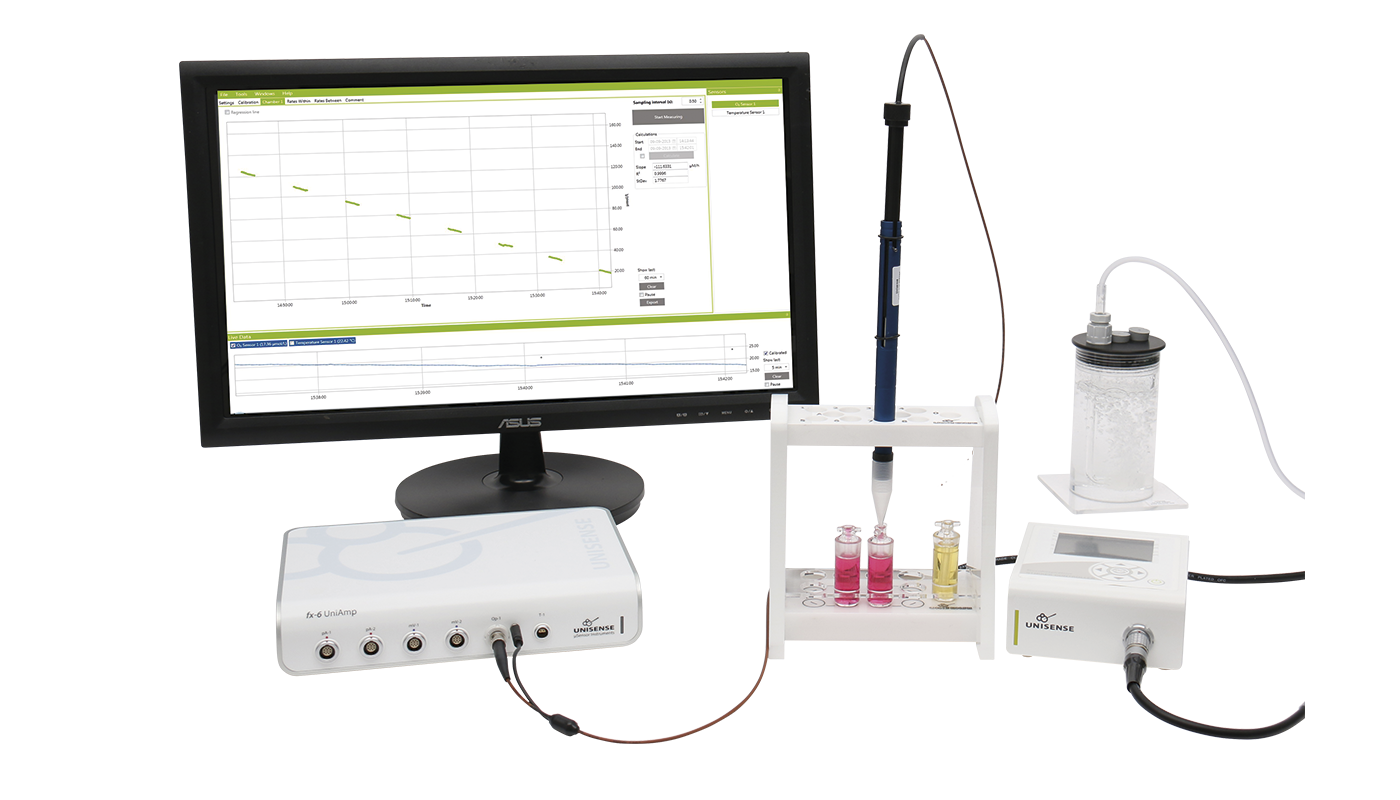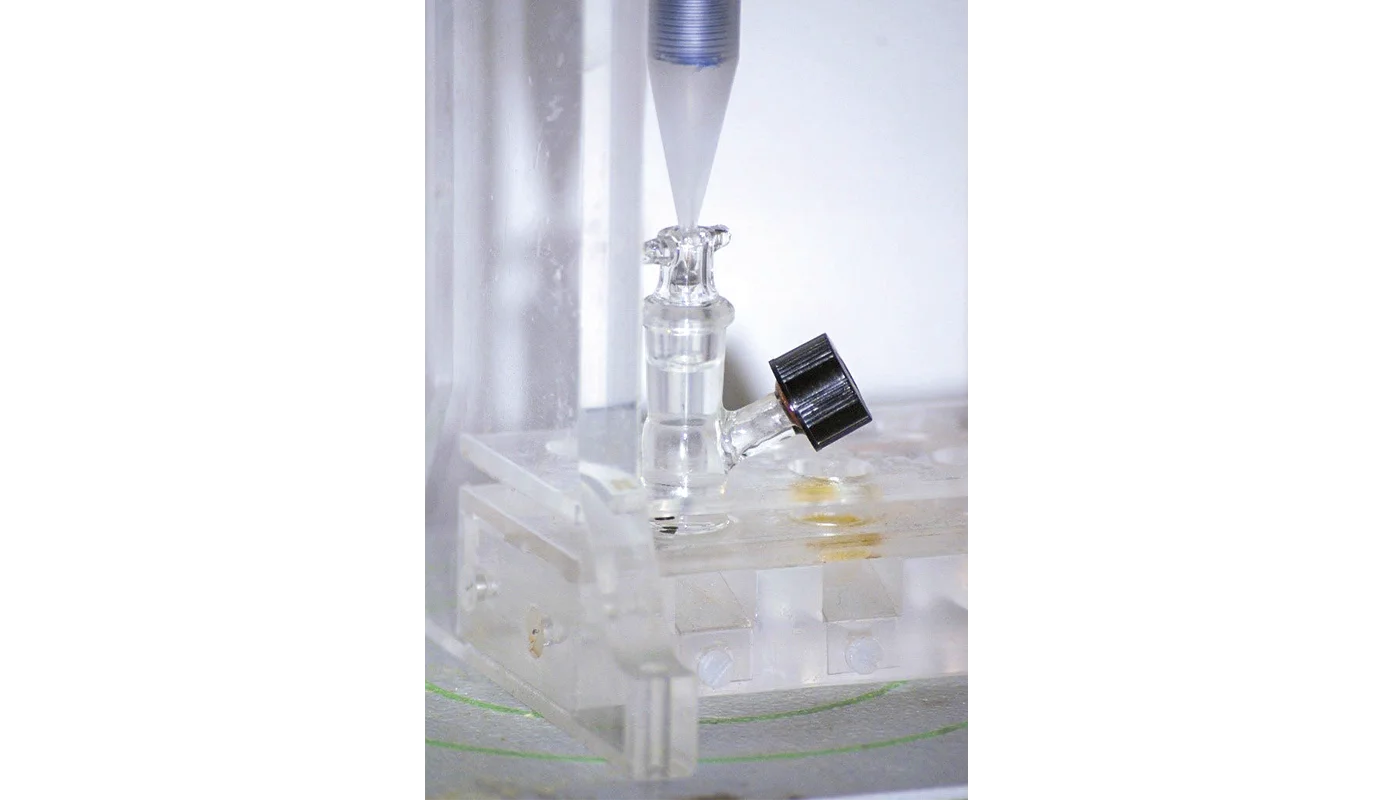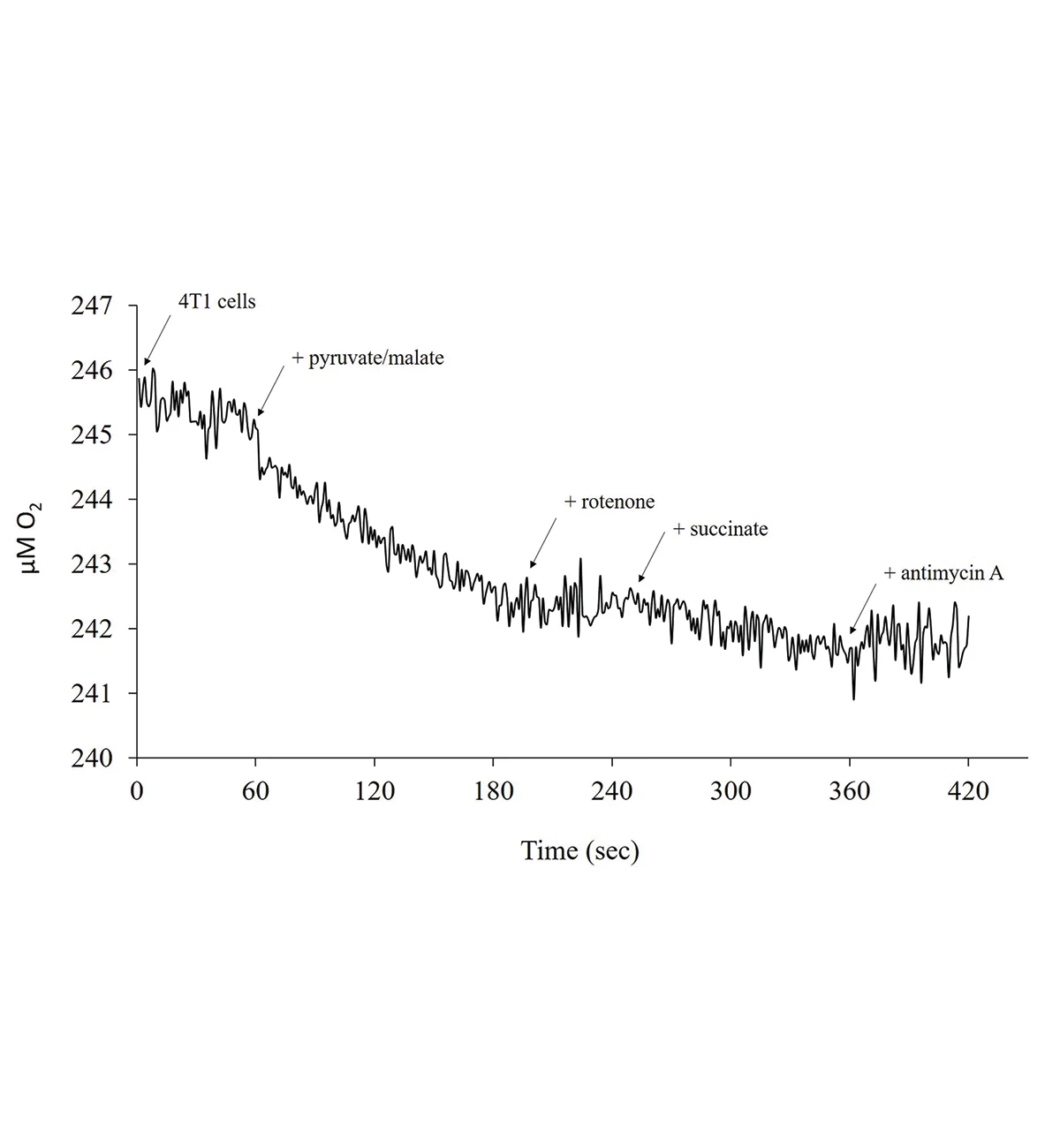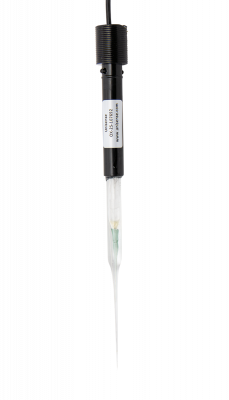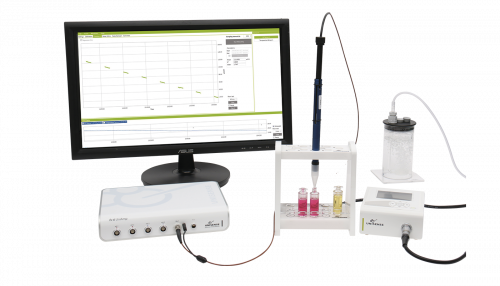Perfluorocarbon regulates the intratumoural environment to enhance hypoxia-based agent efficacy
Wang, Wenguang et al. (2019),
Nature Communications,
vol. 10,
1-11
Wang, Wenguang, Cheng, Yuhao, Yu, Peng, Wang, Haoran, Zhang, Yue, Xu, Haiheng, Ye, Qingsong, Yuan, Ahu, Hu, Yiqiao, Wu, Jinhui (2019),
Nature Communications,
vol.
10,
1-11
Hypoxia-based agents (HBAs), such as anaerobic bacteria and bioreductive prodrugs, require both a permeable and hypoxic intratumoural environment to be fully effective. To solve this problem, herein, we report that perfluorocarbon nanoparticles (PNPs) can be used to create a long-lasting, penetrable and hypoxic tumour microenvironment for ensuring both the delivery and activation of subsequently administered HBAs. In addition to the increased permeability and enhanced hypoxia caused by the PNPs, the PNPs can be retained to further achieve the long-term inhibition of intratumoural O 2 reperfusion while enhancing HBA accumulation for over 24 h. Therefore, perfluorocarbon materials may have great potential for reigniting clinical research on hypoxia-based drugs.
10.1038/s41467-019-09389-2
Discrete Changes in Glucose Metabolism Define Aging
Ravera, Silvia et al. (2019),
Scientific Reports,
vol. 9,
10347
Ravera, Silvia, Podestà, Marina, Sabatini, Federica, Dagnino, Monica, Cilloni, Daniela, Fiorini, Samuele, Barla, Annalisa, Frassoni, Francesco (2019),
Scientific Reports,
vol.
9,
10347
Aging is a physiological process in which multifactorial processes determine a progressive decline. Several alterations contribute to the aging process, including telomere shortening, oxidative stress, deregulated autophagy and epigenetic modifications. In some cases, these alterations are so linked with the aging process that it is possible predict the age of a person on the basis of the modification of one specific pathway, as proposed by Horwath and his aging clock based on DNA methylation. Because the energy metabolism changes are involved in the aging process, in this work, we propose a new aging clock based on the modifications of glucose catabolism. The biochemical analyses were performed on mononuclear cells isolated from peripheral blood, obtained from a healthy population with an age between 5 and 106 years. In particular, we have evaluated the oxidative phosphorylation function and efficiency, the ATP/AMP ratio, the lactate dehydrogenase activity and the malondialdehyde content. Further, based on these biochemical markers, we developed a machine learning-based mathematical model able to predict the age of an individual with a mean absolute error of approximately 9.7 years. This mathematical model represents a new non-invasive tool to evaluate and define the age of individuals and could be used to evaluate the effects of drugs or other treatments on the early aging or the rejuvenation.
10.1038/s41598-019-46749-w
Cytoglobin protects cancer cells from apoptosis by regulation of mitochondrial cardiolipin
Thorne, Lorna S. et al. (2021),
Scientific Reports,
vol. 11,
1-16
Thorne, Lorna S., Rochford, Garret, Williams, Timothy D., Southam, Andrew D., Rodriguez-Blanco, Giovanny, Dunn, Warwick B., Hodges, Nikolas J. (2021),
Scientific Reports,
vol.
11,
1-16
Cytoglobin is important in the progression of oral squamous cell carcinoma but the molecular and cellular basis remain to be elucidated. In the current study, we develop a new cell model to study the function of cytoglobin in oral squamous carcinoma and response to cisplatin. Transcriptomic profiling showed cytoglobin mediated changes in expression of genes related to stress response, redox metabolism, mitochondrial function, cell adhesion, and fatty acid metabolism. Cellular and biochemical studies show that cytoglobin expression results in changes to phenotype associated with cancer progression including: increased cellular proliferation, motility and cell cycle progression. Cytoglobin also protects cells from cisplatin-induced apoptosis and oxidative stress with levels of the antioxidant glutathione increased and total and mitochondrial reactive oxygen species levels reduced. The mechanism of cisplatin resistance involved inhibition of caspase 9 activation and cytoglobin protected mitochondria from oxidative stress-induced fission. To understand the mechanism behind these phenotypic changes we employed lipidomic analysis and demonstrate that levels of the redox sensitive and apoptosis regulating cardiolipin are significantly up-regulated in cells expressing cytoglobin. In conclusion, our data shows that cytoglobin expression results in important phenotypic changes that could be exploited by cancer cells in vivo to facilitate disease progression.
10.1038/s41598-020-79830-w
Photocatalysis-mediated drug-free sustainable cancer therapy using nanocatalyst
Zhao, Bin et al. (2021),
Nature Communications,
vol. 12,
1-11
Zhao, Bin, Wang, Yingshuai, Yao, Xianxian, Chen, Danyang, Fan, Mingjian, Jin, Zhaokui, He, Qianjun (2021),
Nature Communications,
vol.
12,
1-11
Drug therapy unavoidably brings toxic side effects and drug content-limited therapeutic efficacy although many nanocarriers have been developed to improve them to a certain extent. In this work, a concept of drug-free therapeutics is proposed and defined as a therapeutic methodology without the use of traditional toxic drugs, without the consumption of therapeutic agents during treatment but with the inexhaustible therapeutic capability to maximize the benefit of treatment, and a Z-scheme SnS1.68-WO2.41 nanocatalyst is developed to achieve near infrared (NIR)-photocatalytic generation of oxidative holes and hydrogen molecules for realizing combined hole/hydrogen therapy by the drug-free therapeutic strategy. Without the need of any drug and other therapeutic agent assistance, the nanocatalyst oxidizes/consumes intratumoral over-expressed glutathione (GSH) by holes and simultaneously generates hydrogen molecules in a lasting and controllable way under NIR irradiation. Mechanistically, generated hydrogen molecules and GSH consumption inhibit cancer cell energy and destroy intratumoral redox balance, respectively, to synergistically damage DNA and induce tumor cell apoptosis. High efficacy and biosafety of combined hole/hydrogen therapy of tumors are achieved by the nanocatalyst. The proposed catalysis-based drug-free therapeutic strategy breaks a pathway to realize high efficacy and low toxicity of cancer treatment.
10.1038/s41467-021-21618-1
Targeting the acidic tumor microenvironment: Unexpected pro-neoplastic effects of oral NAHCO3 therapy in …
Voss, Ninna C.S. et al. (2020),
Cancers,
vol. 12,
-
Voss, Ninna C.S., Dreyer, Thomas, Henningsen, Mikkel B., Vahl, Pernille, Honoré, Bent, Boedtkjer, Ebbe (2020),
Cancers,
vol.
12,
-
The acidic tumor microenvironment modifies malignant cell behavior. Here, we study consequences of the microenvironment in breast carcinomas. Beginning at carcinogen-based breast cancer induction, we supply either regular or NaHCO3-containing drinking water to female C57BL/6j mice. We evaluate urine and blood acid-base status, tumor metabolism (microdialysis sampling), and tumor pH (pH-sensitive microelectrodes) in vivo. Based on freshly isolated epithelial organoids from breast carcinomas and normal breast tissue, we assess protein expression (immunoblotting, mass spectrometry), intracellular pH (fluorescence microscopy), and cell proliferation (bromodeoxyuridine incorporation). Oral NaHCO3 therapy increases breast tumor pH in vivo from 6.68 ± 0.04 to 7.04 ± 0.09 and intracellular pH in breast epithelial organoids by ~0.15. Breast tumors develop with median latency of 85.5 ± 8.2 days in NaHCO3-treated mice vs. 82 ± 7.5 days in control mice. Oral NaHCO3 therapy does not affect tumor growth, histopathology or glycolytic metabolism. The capacity for cellular net acid extrusion is increased in NaHCO3-treated mice and correlates negatively with breast tumor latency. Oral NaHCO3 therapy elevates proliferative activity in organoids from breast carcinomas. Changes in protein expression patterns—observed by high-throughput proteomics analyses—between cancer and normal breast tissue and in response to oral NaHCO3 therapy reveal complex influences on metabolism, cytoskeleton, cell-cell and cell-matrix interaction, and cell signaling pathways. We conclude that oral NaHCO3 therapy neutralizes the microenvironment of breast carcinomas, elevates the cellular net acid extrusion capacity, and accelerates proliferation without net effect on breast cancer development or tumor growth. We demonstrate unexpected pro-neoplastic consequences of oral NaHCO3 therapy that in breast tissue cancel out previously reported anti-neoplastic effects.
10.3390/cancers12040891
Curcumin induces a fatal energetic impairment in tumor cells in vitro and in vivo by inhibiting ATP-synthase activity
Bianchi, Giovanna et al. (2018),
Carcinogenesis,
vol. 39,
1141-1150
Bianchi, Giovanna, Ravera, Silvia, Traverso, Chiara, Amaro, Adriana, Piaggio, Francesca, Emionite, Laura, Bachetti, Tiziana, Pfeffer, Ulrich, Raffaghello, Lizzia (2018),
Carcinogenesis,
vol.
39,
1141-1150
Curcumin has been reported to inhibit inflammation, tumor growth, angiogenesis and metastasis by decreasing cell growth and by inducing apoptosis mainly through the inhibition of nuclear factor kappa-B (NFκB), a master regulator of inflammation. Recent reports also indicate potential metabolic effects of the polyphenol, therefore we analyzed whether and how it affects the energy metabolism of tumor cells. We show that curcumin (10 µM) inhibits the activity of ATP synthase in isolated mitochondrial membranes leading to a dramatic drop of ATP and a reduction of oxygen consumption in in vitro and in vivo tumor models. The effects of curcumin on ATP synthase are independent of the inhibition of NFκB since the IκB Kinase inhibitor, SC-514, does not affect ATP synthase. The activities of the glycolytic enzymes hexokinase, phosphofructokinase, pyruvate kinase and lactate dehydrogenase are only slightly affected in a cell type-specific manner. The energy impairment translates into decreased tumor cell viability. Moreover, curcumin induces apoptosis by promoting the generation of reactive oxygen species (ROS) and malondialdehyde (MDA), a marker of lipid oxidation, and autophagy, at least in part due to the activation of the AMP-activated protein kinase (AMPK). According to the in vitro anti-tumor effect, curcumin (30 mg/kg body weight) significantly delayed in vivo cancer growth likely due to an energy impairment but also through the reduction of tumor angiogenesis. These results establish the ATP synthase, a central enzyme of the cellular energy metabolism, as a target of the antitumoral polyphenol leading to inhibition of cancer cell growth and a general reprogramming of tumor metabolism.
10.1093/carcin/bgy076


